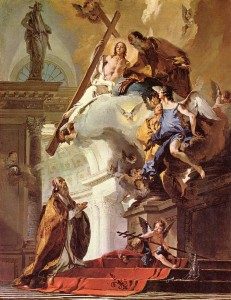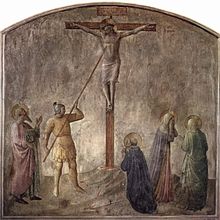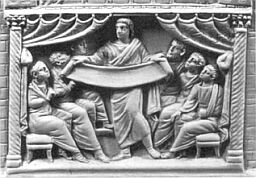 Now this time I might add more detail than usual since I find Couchoud’s views on the Gospel according to Saint Luke (at least as covered across several posts here and not necessarily confined to any one in particular) not very distant in many respects from the notions I have been thinking about, though not entirely without the support of a few scholarly publications. I had not realized when I began to share these few chapters of The Creation of Christ that the author continues on to discuss the creation of the Book of Acts and the remainder of the New Testament epistles after Paul’s. It’s an interesting read. I have to share those thoughts in future posts, too. The complete series of these posts is archived here.
Now this time I might add more detail than usual since I find Couchoud’s views on the Gospel according to Saint Luke (at least as covered across several posts here and not necessarily confined to any one in particular) not very distant in many respects from the notions I have been thinking about, though not entirely without the support of a few scholarly publications. I had not realized when I began to share these few chapters of The Creation of Christ that the author continues on to discuss the creation of the Book of Acts and the remainder of the New Testament epistles after Paul’s. It’s an interesting read. I have to share those thoughts in future posts, too. The complete series of these posts is archived here.
Back to Marcion
Couchoud returns at this point of his discussion to Marcion. He imagines a setting where Marcion is seeing the Syrian churches (with their Gospel of Matthew) and the Asian churches (with their theology of John) all opposing him. According to one account when Marcion visited Ephesus the author of the Gospel of John rebuked him as the Deceiver and Antichrist. When he visited Smyrna the bishop Polycarp rebuffed him with the words, “I recognize thee as the first-born of Satan.” Paul, meanwhile, had long since consigned the great apostles themselves to Satan (Irenaeus, Haer. iii. 3-4).
Marcion, with followers as widespread as Africa (Carthage), Gaul (Lyons) and Rome itself, hoped to reverse the mounting conflicts in the East by securing Rome’s approval of his doctrines. Rome’s Christians, like Marcion’s, had no time for Jews and celebrated “Easter”, as did Marcionites but unlike “John’s” churches in Asia, at a time other than the Jewish Passover. Both Rome’s devotees and Marcion’s fasted on the Jewish sabbath (allowing for a typo in the translated work of Couchoud) to spite the Jews. The Roman Gospel of Mark was as neo-Pauline as was Marcion’s and differed from Marcion’s only in respect to the identity of the highest God. Continue reading “The earliest gospels 6(a) – on the cusp of Luke (à la Couchoud)”





